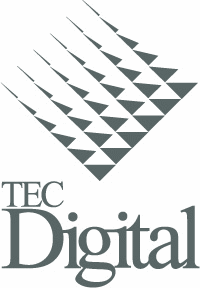In use by nearly half a million users, the .LRN platform was orginally developed to support universities, and now we also use it with schools, businesses and non-profit organisations.
 | Costa Rica Institute of Technology |
About Costa Rica Institute of Technology
TEC-Digital is the implementation of .LRN platform in the Costa Rica Institute of Technology (ITCR). The ITCR is a public university of Costa Rica, and it is focused on teaching engineering careers. Established on 1971, with the mission of: “Contribute to the integral development of the country by graduating professionals, working on research and extension and leading technological, scientific and technical matters; and by keeping academic excellence, following all ethic, humanistic and environmental principles from the perspective of a high quality state university competing nationally and internationally”.
Currently the ITCR has 7385 active students distributed in 55 careers, and about 900 teachers.
ITCR was using the Microcampus platform since 1998, in February 2008 began the project to update the LMS platform in the ITCR.
Why Costa Rica Institute of Technology chose .LRN
We compared Moodle, Sakai and .LRN as LMS platforms.
The main issues compared were:
- Technical Architecture
- Database: Postgresql as database engine is more robust and stable than MySql, the support to stored procedures, indexes, cursors, transactions and scalability are really very important things to consider(Maciej Glowiak / PSNC, 2005).
- Web server: AOLServer as web server: it is good to know the number of attacks for hacking, and AOLServer is one of the more secure web server.
- Language support: tcl is not a popular programming language, but when it is used in combination with the OpenACS toolkit the productivity in solutions delivered is considerably positive.
- Scalability options: considering Postgresql and AOLServer, the support for clustering on database and web server, and the support of pooling connections to the database and the multithreading are conditions very important to consider for planning the future scalability.
- Interface
- Facility to use: the LMS compared are really easy to use and they have intuitive interface.
- Interface design: the interface design are different, and considering that web interfaces using ajax are not so popular when those LMS were designed, the interface could be improved in all of them. However the .LRN standard interface, using the Zen theme, is a clear interface.
- Functions supported: in general all LMS support the same functionalities(“ArchiveCMS: 10 LMS Product Comparison System,” 2009). The comparison of functionalities is not the most important issue to consider.
- Support to virtual communities: for ITCR every research project requires an easy way to publish results, and to generate virtual spaces to collaborate, so communities support is a very strategic option. Some comments and argues received were that installing Moodle plus Joomla the solution is completed, but you have two different solutions, and authentication problems. .LRN provides LMS and virtual communities integrated.
- Institutions using the LMS: ITCR were looking for an integral solution, with the capability to be applied in the whole university, integrating internal solutions. The .LRN support for departments is an important advantage helping to integrate the LMS with the real requirements as an institutional platform.
- Development time: this issue is very difficult to know before implement any LMS and adapt it to the university, buy the ITCR experience has been very positive. The programming team, compound by 6 junior programmers, implemented Student profile, Teacher profile, Careers visualization, students and courses institutional databases synchronized with .LRN database, creation of virtual communities for each departments, and other applications in 5 months ready to start real testing. This could be taken around 12 months with other more commercial programming platform.
What Costa Rica Institute of Technology is doing with .LRN
Currently the TEC-Digital has registers of: 5890 active users, with 50 average concurrent connections.
Some other stats generated from February 2009 to June 2009:
- 867 evaluations using the platform.
- 6283 loaded files.
- 510 published news.
- 105 portals for FAQ.
- 47 chat rooms opened.
- 187 forums, and generated 2326 answers.
Future Plans for .LRN at Costa Rica Institute of Technology
- Integrate CmapServer with our LMS, in this way teachers could create evaluations using conceptual maps generated with CmapTools.
- Create a game engine for evaluations and integrating this to courses and facilitating students use this for auto diagnostic on several topics.
- Improve the administration module for .LRN, making it more intuitive and user friendly.
